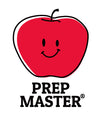Especially among adults, emails are, without a doubt, one of the most prevalent forms of communication. From admission officers to faculty members, you will write a lot of emails starting in 8th grade. Personally, I write and reply to about 5-6 emails daily, to the point where I reserve 15 minutes every morning to correspond. The difference between emails and other forms of communication - text, Kakaotalk, Snapchat, etc. - is that it implicates a certain formality. All emails are customarily structured in a particular way, which may take some time to get used to as a novice email user. In this article, I will discuss some of the necessary formattings along with some organizational etiquette.

Email, short for electronic mail, is the new form of letter, historically sent over by the physical mailing system. Therefore, it should display the traditional stylistic nature of letters, beginning with addressing the recipient and ending with identifying the sender. An example of a typical email should resemble the following:
<
Dear Recipient Name,
Body
Best regards, / Sincerely, / Thank you,
Sender Name
>
When addressing the recipient, you need to use the correct identifier and their last name. For male recipients, it would take the form of “Mr. X.” For married female recipients, you should address them as “Mrs. X.” For others, it should be “Ms. X.” Evidently, there are situations when you are not aware of the recipient’s gender or marital status. For gender, you can take a guess based on their name: male names such as Alex, Hugo, Matthew or female names like Caroline, Grace, Sarah, and Olivia. It’s tolerable to mistake their gender unless it was previously noted. Regarding marital status for female recipients, it is always safe to use “Ms.” - short for Miss - when you don’t know.
For the concluding phrase, “Best regard,” “Sincerely” and “Thank you”, for instance, a variety of options exist. Technically, they imply a different level of formality and meaning, but it’s primarily interchangeable nowadays. You can pick one and stick to it in all your emails. My personal favorite is “Sincerely.” Also, don’t forget to put a comma after the concluding phrase.
Lastly, the sender's name should always be your full name. These customs can become a hassle, especially when there are multiple quick correspondences. However, keeping these simple formats is a manner and demonstrates your respect to the recipient.
The subject of the email also matters quite a bit. It is what prompts the receiver to open the email. Again as an adult, your receiver will receive and reply to tons of emails daily, so your subject should clearly note its purpose and who it's from. Keep in mind, while email subjects don’t have a word limit, there is a limit to how much text you can see on the screen. If you write a long subject, after certain characters, it will display as “...”. So keep it concise. A model example should look something like this: “Professional Email Tips - Alex Lim.”
Onto the most important part of the email: the body. As the body of an email is a free space to discuss the intended content, it can take any form, just like writing an essay. However, there are certain etiquettes and organizational tips to respectfully and effectively convey your purpose. In all emails, the beginning of an email should contain a form of greeting. If it's after a holiday, a simple “I hope you had a great Thanksgiving/Christmas/New Years” will do. If not, a personalized greeting like “I hope your application prep is going well.” At the very least, you should begin with, “I hope this email finds you well.” While an email’s content itself can be structured in various ways, the one mistake to avoid is having a big block of text. Emails are supposed to be a quick and easy form of communication, and since a lot of people use their phones to check their emails, the readability of your email is important. Break your email down to 2-3 sentences per paragraph, use numbered or bullet points when listing, and bold/italicize/underline important keywords and phrases.
It may seem like there are lots of considerations that need to take place when writing an email. Rest assured, after a few emails, these formatting customs become engraved as a habitual response when writing any emails.

COPYRIGHT 2023 PREPMASTER. ALL RIGHTS RESERVED.
UNAUTHORIZED COPYING OF SOME OR ALL OF THE TEXT IS STRICTLY PROHIBITED BY LAW.
ALL THE CONTENTS OF THE PREPMASTER ARE PROTECTED BY COPYRIGHT.
글의 일부 또는 전체의 무단 복제는 법으로 엄격히 금지되어 있습니다.
PREPMASTER의 모든 컨텐츠는 저작권에 의해 보호됩니다.


